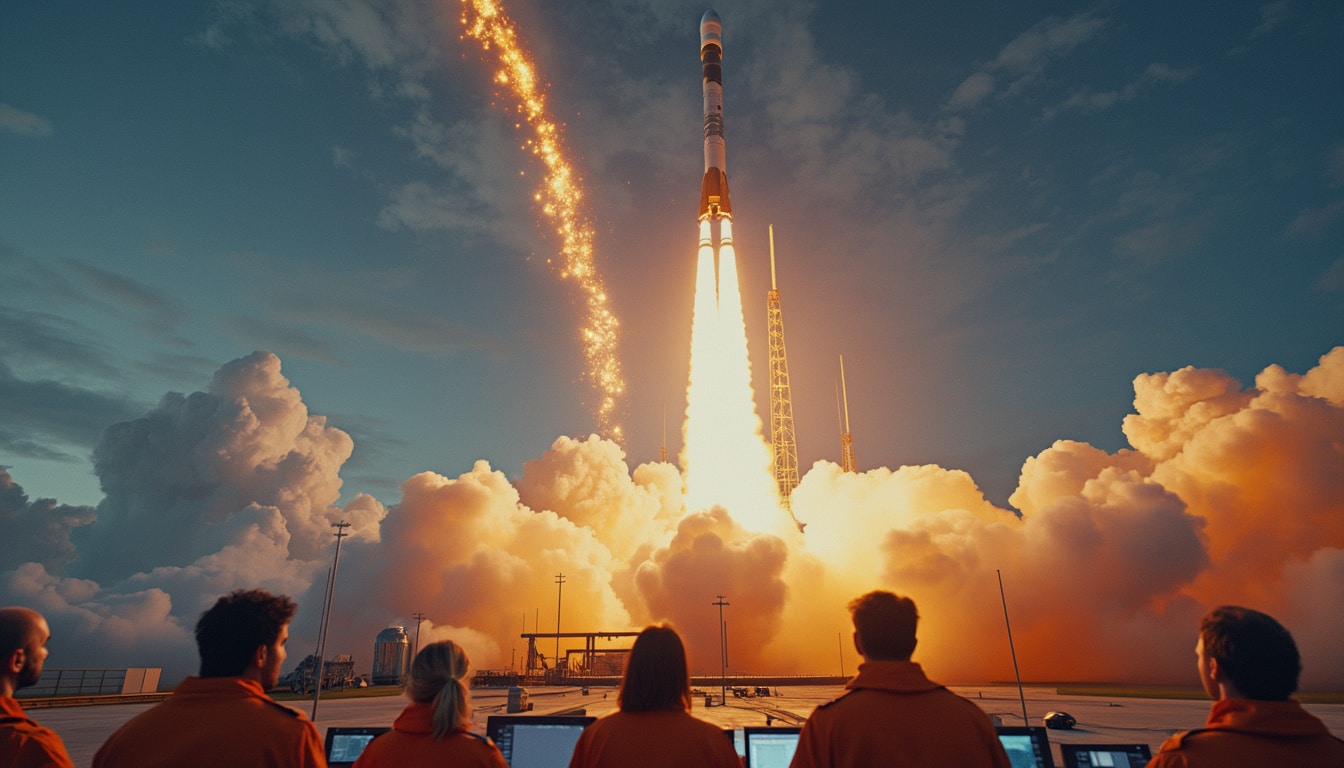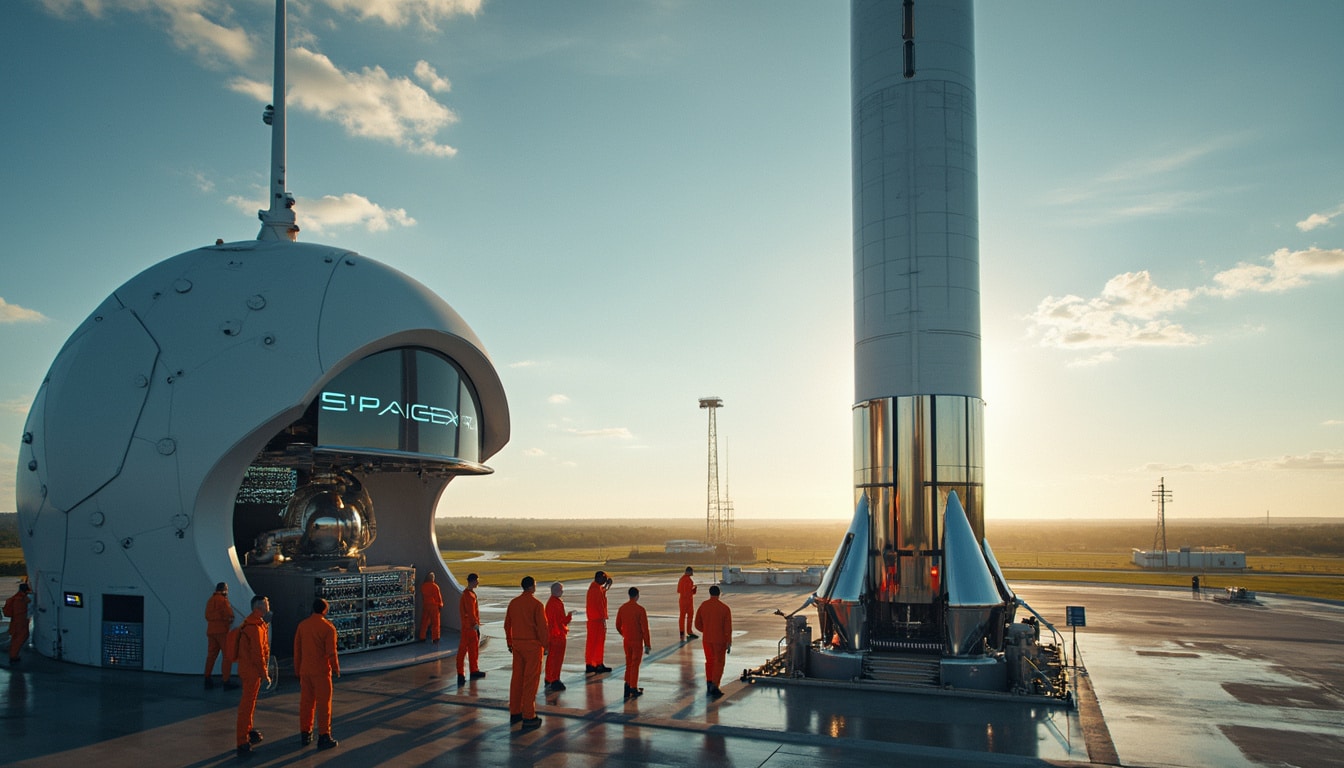The world of space exploration is changing rapidly, with significant attention focused on major players like SpaceX, Tesla, and their enigmatic leader, Elon Musk. In the midst of rising discontent towards Musk, particularly concerning his leadership style and business decisions, analysts are questioning whether SpaceX is facing a similar storm as Tesla. SpaceX, which has made impressive strides with its satellite internet service, Starlink, faces challenges that could impact its reputation and valuation, just like those currently affecting Tesla.
Investor enthusiasm for SpaceX has been buoyed by Starlink’s rapid growth but concerns about the viability of its business model raise critical questions. With Musk’s controversial management decisions, especially during sensitive political climates, the potential for backlash could undermine SpaceX’s position as the world’s most valuable private company. As competition intensifies, understanding these dynamics will be crucial for investors and space enthusiasts alike.
Challenges Facing SpaceX Amidst Industry Rivalry
SpaceX has been a beacon of innovation and ambition in the aerospace industry, having pioneered reusable rocket technology and successfully captured a significant share of satellite launch contracts. However, as the company continues to pursue ambitious goals, it faces challenges that could hinder its growth trajectory. With a backdrop of competing companies—including Blue Origin, Virgin Galactic, and traditional aerospace giants like Boeing, Lockheed Martin, and Northrop Grumman—the landscape is becoming increasingly competitive.

Investor Sentiment and Market Performance
In recent months, Tesla has experienced a steep decline in stock valuation amidst negative sentiment surrounding Musk’s leadership style, particularly his alignment with political ideologies that many find concerning. This turmoil raises the question: could SpaceX find itself mired in a similar predicament? Investor confidence in SpaceX has flourished due to Starlink’s remarkable rollout, which has reached millions of users and outpaced traditional satellite providers. The critics, however, are starting to scrutinize the sustainability of this growth.
The key to Starlink’s success lies in its ability to provide high-speed internet to under-served regions. Musk, who famously stated, “Starlink is how we are paying for humanity to get to Mars,” has linked the project to the larger vision of establishing a human presence on the Martian surface. But as demand surges, the operational challenges are intensifying. For example, the constellation of 7,100 satellites in low-Earth orbit currently faces capacity constraints in densely populated areas. It appears that a significant portion of Starlink’s potential revenue might hinge on its continued success in securing partnerships and contracts with government and commercial entities, as seen with initiatives targeted at remote rural locations and emergency services.
The Growth and Risk Factors of Starlink
While the potential for revenue through Starlink is enormous—estimated to be in the realm of $20 billion or more by 2030—it is tied to inherent risks and uncertainties. SpaceX has not released detailed financial statements, sparking concerns among analysts. Revenue estimates from independent sources imply that Starlink must scale significantly beyond its current footprint to meet expected demands. Furthermore, significant investment in satellite technology and infrastructure will be necessary, raising the question of how this expansion can be financed.
Although analysts project impressive revenues from Starlink, they also caution against overly optimistic valuations that do not account for serious logistical limitations. The service’s current pricing structure is often regarded as prohibitive for potential users in emerging markets. Moreover, as competition from other companies, including Amazon’s Project Kuiper, intensifies, SpaceX must demonstrate that its service can remain competitive without sacrificing profitability.

Leadership Decisions and Public Image
Musk’s leadership choices have always been controversial. As previously noted, publicly aligning with right-wing nationalists and drawing criticism for managerial decisions has not only impacted Tesla but may soon pose similar challenges to SpaceX. Questions have arisen regarding how Musk’s public persona influences investor sentiment and government relations. As SpaceX seeks to expand its contracts both domestically and internationally, the importance of an unblemished public image cannot be overlooked.
Recent controversies have spilled into the business arena as Musk continues to face significant backlash over his management styles at Twitter, which in turn affects perceptions of his other ventures. Investors might be wary of committing resources to a company owned by a figure whose recent actions have raised so many eyebrows. This uncertainty could permeate the boardrooms of potential partners and government agencies, complicating efforts to secure crucial funding and support.Read more here.
Looking Ahead: A Dissonant Future for SpaceX?
The multiple challenges posed to both SpaceX and Tesla highlight a critical juncture for the companies. Investor confidence, market performance, and the ability to adapt to ever-evolving landscapes are essential factors. While SpaceX is viewed as the front-runner in the commercial space race, maintaining this lead will require navigating not only technical hurdles but also issues stemming from Musk’s public image and the oscillating political context.
To better understand where SpaceX might be headed, an analysis of competitive threats is crucial. Companies like Rocket Lab and Relativity Space are advancing their technologies, and traditional players such as Arianespace are also keenly watching the industry’s dynamics. As market conditions shift, SpaceX may need to adopt alternative strategies to sustain its growth momentum.

Strategic Adjustments and Future Outlook
For SpaceX to maintain its competitive edge, it must actively pursue strategic innovations. The emerging satellite internet services’ landscape necessitates adaptation to technological advancements, while Musk must also become more attuned to investor sentiment to prevent backlash related to public relations issues. Properly addressing these dual facets could help mitigate risks associated with the unique challenges the aerospace sector faces.
With a massive $350 billion valuation spotlit on the secondary markets, questions surrounding its sustainability linger. Analysts have posited that potential reassessments of its growth trajectory could alter this perception. If negotiations with global governmental bodies fall short or if Starlink’s growth plateaus, both morale and evaluation figures could dip significantly.Find out more.
Potential Impacts of Regulatory Landscape and Policy Changes
The regulatory landscape pertaining to space exploration is another key component influencing SpaceX’s long-term strategies. As the company expands its reach globally, regulatory hurdles related to access, permissions, and international treaties come into play. Partnerships with governments may be crucial but can be fraught with complexities, especially given Musk’s perceived political entanglements. The potential fallout from regulatory decisions may create obstacles or open pathways that significantly affect operations and market valuation.
Ultimately, SpaceX’s navigation of these waters will determine its fate in an increasingly crowded market. The competition with Blue Origin and others will likely spur innovation, but it also raises the stakes. A misstep for SpaceX, akin to those facing Tesla, could lead to a significant downturn in public perception and investor interest, forcing the company into a defensive posture.
Conclusion Remarks on the Future of SpaceX
SpaceX’s future remains a mosaic of potential and uncertainty. Investors and enthusiasts alike keep a watchful eye on the developments unfolding under Elon Musk’s leadership. The interplay of innovation, market positioning, and Musk’s personal brand can lead to both extraordinary successes or startling failures. As the company grapples with its ambitions and the realities of an evolving aerospace landscape, understanding the multifaceted dynamics at play will be essential for anyone looking to gauge SpaceX’s trajectory in the coming years.




Leave a Reply